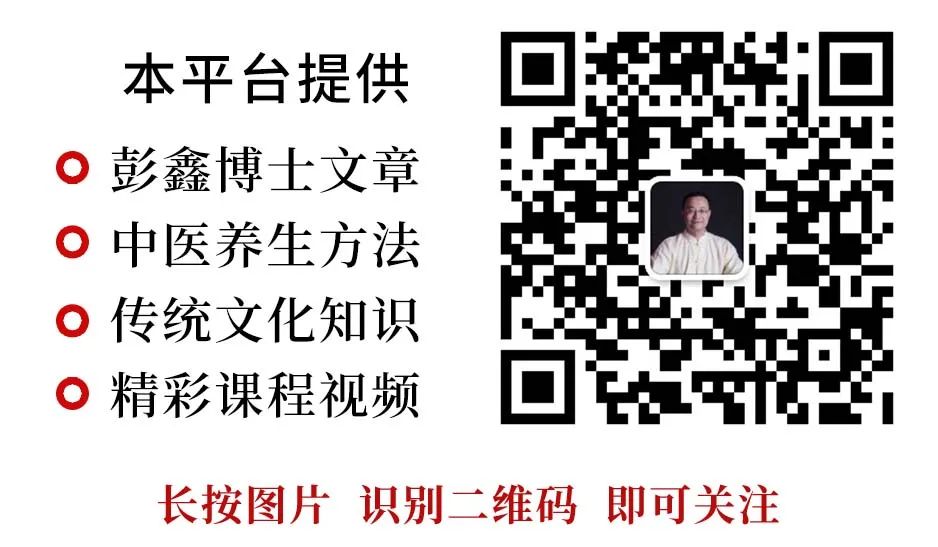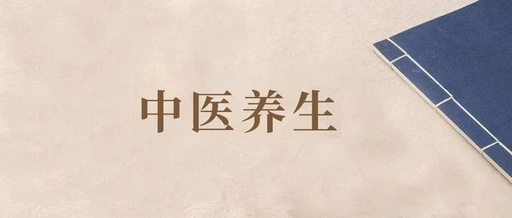↑Click the card above to follow me↑[This article is: Dr. Peng Xin’s explanation of the “TCM Treatment of Exogenous Diseases” series, Lecture 6 (more exciting content will be updated in the next issue…)]Dear listeners, hello, I am Dr. Peng Xin from TCM.Today, I will share with you the courseThe main title is:TCM Rehabilitation and Health Preservation Methods for Diarrhea After Recovery from Exogenous DiseasesThe subtitle is:Ancient TCM Methods for Treating Exogenous Diseases (Lecture 6) – After Recovery: DiarrheaSpecial Note:The content of this article is mainly for clinical reference for TCM professionals. The formulas, herbs, and other methods mentioned in the text should not be used blindly by non-professionals and should be applied under the guidance of a qualified TCM practitioner.In previous courses, I shared with you:Ancient TCM Methods for Treating Exogenous Diseases (Lecture 1): Wind-Cold Exogenous Syndrome, Wind-Heat Exogenous Syndrome (click to view)Ancient TCM Methods for Treating Exogenous Diseases (Lecture 2): Qi Deficiency Exogenous Syndrome (click to view)Ancient TCM Methods for Treating Exogenous Diseases (Lecture 3): Cold-Damp Exogenous Syndrome(click to view)Ancient TCM Methods for Treating Exogenous Diseases (Lecture 4): After Recovery: Qi Deficiency and Fatigue(click to view)Ancient TCM Methods for Treating Exogenous Diseases (Lecture 5): After Recovery: Cough and Throat Itch(click to view)and other content, explaining the TCM differentiation and treatment methods for various syndromes of exogenous diseases such as “Wind-Cold Exogenous Syndrome,” “Wind-Heat Exogenous Syndrome,” “Qi Deficiency Exogenous Syndrome,” “Cold-Damp Exogenous Syndrome,” as well as post-recovery conditions like “Qi Deficiency and Fatigue” and “Cough and Throat Itch.” In this course, I will continue to share the thoughts and personal experiences of ancient TCM methods for treating exogenous diseases, and today’s theme is:TCM Rehabilitation and Health Preservation Methods for Diarrhea After Recovery from Exogenous Diseases.1. Pathogenesis Analysis of Diarrhea After Recovery from Exogenous DiseasesAfter an exogenous disease, young people or those with generally good health can gradually recover in 2-3 weeks. (Please follow WeChat: pengxinboshi) However, those with weak constitutions, underlying diseases, or elderly patients may experience persistent symptoms such as diarrhea after recovery.TCM believes that after illness, if the body is weak, symptoms like diarrhea, loose stools, and fatigue may occur, primarily due to insufficient spleen and stomach qi, which may also be accompanied by “cold pathogens,” “damp pathogens,” or “qi stagnation,” all of which can lead to diarrhea.The specific conditions of patients are generally complex; while a single syndrome may occur, it is rare. More commonly, there are mixed syndromes, such as spleen and stomach deficiency with cold, spleen deficiency with dampness, spleen deficiency with qi stagnation, or spleen deficiency with cold and dampness. If the patient also has kidney yang deficiency or liver qi stagnation, a more detailed differentiation analysis involving other organs is necessary.2. Example of DifferentiationDue to the complexity of differentiation and treatment for diarrhea after recovery from exogenous diseases, I cannot analyze each case in detail due to time constraints. I will share one common type based on current experience.Post-Illness Qi Deficiency, Spleen and Stomach Cold Deficiency1. Main Manifestations:Loose stools, poor appetite, (possibly with nausea and vomiting), discomfort in the stomach area, increased stool frequency after consuming greasy or cold foods, abdominal pain, preference for warmth and pressure, (possibly with cold limbs), fatigue, no thirst, pale tongue with white moist coating, and a pulse that is deep, thin, or weak.(Warm reminder: The above are the most typical and comprehensive symptoms of various syndromes; patients do not necessarily present textbook cases, and differentiation and treatment should be adjusted based on clinical specifics.)2. Summary of Pathogenesis:Post-illness qi deficiency, spleen and stomach cold deficiency3. Treatment Principles:Warm yang, tonify qi, strengthen the spleen, and replenish qi4. Corresponding Formulas and Herbs:The main formula is Li Zhong Tang (Regulating the Middle Decoction). (Adjustments can be made based on clinical conditions.)5. Composition of the Formula::Li Zhong Tang consists of: Ren Shen (Ginseng) 9g, Bai Zhu (White Atractylodes) 9g, Gan Jiang (Dried Ginger) 9g, Zhi Gan Cao (Honey-Fried Licorice) 9g. [1](The composition and dosage of the above formula are primarily based on the standardized textbooks of TCM colleges, and TCM professionals can adjust them according to the specific clinical conditions of the patient.)6. Analysis of the Formula:After an exogenous disease, although the pathogenic qi is gone, the righteous qi has not yet recovered. Cold pathogens harm yang, leading to cold deficiency in the spleen and stomach. Therefore, after exogenous diseases, the body’s yang qi is often damaged, making it prone to spleen and stomach cold deficiency issues.Li Zhong Tang originates from the “Shang Han Lun” by the medical sage Zhang Zhongjing, with the major herb being Gan Jiang (Dried Ginger), which is warm and spicy, to warm the spleen yang and dispel cold pathogens. Ren Shen (Ginseng), which is sweet and warm, is used to tonify the five organs and strengthen the spleen and replenish qi. Bai Zhu (White Atractylodes), which is sweet, warm, and slightly drying, is used to strengthen the spleen and dry dampness. (Please follow WeChat: pengxinboshi) Gan Cao (Licorice) harmonizes the other herbs and combines with Gan Jiang to form Gan Cao Gan Jiang Tang, which warms yang and alleviates pain, and enhances the qi-tonifying and spleen-strengthening effects when combined with Ren Shen and Bai Zhu, thus serving as the guiding herb. The four herbs work together to warm and tonify, dispel cold to stop diarrhea, strengthen the spleen and replenish qi to assist in transformation, hence the name “Li Zhong” Tang.7. Adjustments:If cold pathogens are not completely dispelled, add Gui Zhi (Cinnamon Twig) 9g to form Gui Zhi Ren Shen Tang, which treats “Tai Yang disease, external symptoms not resolved, and frequent diarrhea, leading to heat and diarrhea that does not stop, with hardness in the heart area, and unresolved exterior and interior, Gui Zhi Ren Shen Tang is the main treatment.” (Shang Han Lun, Section 163) – “Heat-Associated Diarrhea”If there is chest tightness, poor appetite, heaviness, and a white greasy tongue coating, it indicates dampness in the middle jiao, and can add Huo Xiang (Agastache) 6g, Cang Zhu (Atractylodes) 6g, and Hou Po (Magnolia Bark) 6g to strengthen the spleen, regulate qi, and transform dampness.If there is abdominal distension and pain, it indicates qi stagnation, and can add Chen Pi (Tangerine Peel) 5g and Sha Ren (Amomum) 5g to move qi and alleviate pain.3. Health Preservation and Wellness Methods1. Dietary Therapy Methods
For those with spleen and stomach cold deficiency,it is advisable to use:Gan Cao Gan Jiang Tea (Zhi Gan Cao 3g, Gan Jiang 1.5g),brewed as a tea substitute. Caution is advised for those with dry mouth and tongue, or yin deficiency with heat.
2. Moxibustion for Health Preservation
For those with spleen and stomach cold deficiency,select the acupoints:Zhong Wan, Guan Yuan, Qi Hai, Zu San Li, moxibustion for 30 minutes at each point.This helps to tonify qi, strengthen the spleen, and warm the middle to disperse cold. Suitable for spleen and stomach cold deficiency syndrome. Caution is advised for those with dry mouth and tongue, or yin deficiency with heat.
4. Daily Health Preservation Tips After Recovery1. Dietary ConsiderationsIt is recommended to avoid raw, cold, spicy, overly sweet, and greasy foods, especially raw and greasy foods that can harm yang qi and the spleen and stomach’s transformation functions. The diet should be light, warm, nutritious, and easy to digest, eating until 70-80% full, avoiding overeating to prevent additional burden on the spleen and stomach.2. Speak Less to Preserve QiTCM believes that excessive talking depletes qi, so after recovery, it is advisable to speak less to preserve lung qi.3. Mental Health MaintenanceMaintain a calm mindset, avoiding emotional disturbances (joy, anger, worry, thought, sadness, fear, surprise), and try to minimize screen time on phones, computers, and TVs to cultivate tranquility and nourish the spirit.4. Gradual Resumption of Work and ExerciseAfter recovery, prioritize rest and gradually restore energy and physical strength. Only after complete recovery of vital energy should one undertake a certain amount of exercise and work, avoiding excessive physical activity and workload too soon.Special Note:The content of this article is mainly for reference by TCM clinical practitioners. The formulas, herbs, and other methods mentioned should not be used blindly by non-professionals and should be applied under the guidance of a qualified TCM practitioner.The above are the TCM health preservation methods for diarrhea after recovery from exogenous diseases.Due to time constraints, this is where I will conclude today’s lesson. (Please follow WeChat: pengxinboshi) I will share more TCM health preservation methods for other post-recovery issues in the next courses. Thank you for listening!I sincerely wish you good health!
I am Dr. Peng Xin from TCM, see you in the next issue! (To be continued)
References[1] Duan Fujin. Formulas and Prescriptions [M]. Shanghai: Shanghai Scientific and Technical Publishers, 1995:100This article is: Dr. Peng Xin’s explanation of the “TCM Treatment of Exogenous Diseases” series, Lecture 6, more exciting content will be updated in the next issue.Previous content of Dr. Peng’s series on “TCM Treatment of Exogenous Diseases”:1: Ancient TCM Methods for Treating Exogenous Diseases (Lecture 1) – Differentiation Experience Sharing: Wind-Cold, Wind-Heat (click to view the original text)2:What to do if a person with qi deficiency contracts an exogenous disease? What are the sequelae? (click to view the original text)3: What to do if a person with heavy dampness contracts an exogenous disease? What are the sequelae? (click to view the original text)4:TCM Rehabilitation and Dietary Therapy for “Qi Deficiency and Fatigue” After Recovery from Exogenous Diseases (click to view the original text)5:TCM Rehabilitation and Health Preservation Methods for “Cough and Throat Itch” After Recovery from Exogenous Diseases (click to view the original text)Disclaimer: This article is a health knowledge sharing. The medications, formulas, acupuncture, and other treatment and health preservation methods mentioned should be applied under the guidance of a qualified practitioner, and should not be used independently. The author is not responsible for any issues arising from improper use.Copyright Statement: This article is authored byPeng Xin,this is an original article, and reproduction or citation without permission is prohibited.(Copyright belongs to the original author, and all legal rights are reserved)Recommended Reading
Follow “Dr. Peng Xin’s TCM Studio” Public WeChat Account, reply with the number 2022 to view popular reading collections.
[Audio Attached] Dr. Peng Xin explains the “Moxibustion for Health Preservation” series
[Audio Attached] Dr. Peng explains the “Twenty-Four Solar Terms for Health Preservation”
[Audio Attached] Dr. Peng explains the essence of the “Huangdi Neijing” series
[State Council Information Office] Dr. Peng Xin, PhD in TCM: The ultimate point of integration between Chinese and Western medicine lies in clinical practice.
[Tsinghua University] Dr. Peng Xin’s public lecture – Modern Insights from Peng Zu’s Health Preservation Philosophy
[Baduanjin Complete Collection] Health Preservation Techniques – Dr. Peng Xin presents you with a gift
An important cause of obesity (including solutions)
“Winter Solstice” – the birth of yang, the correct health preservation method is as follows
[Video] Vortex Gathering Energy: Ascending Clarity and Descending Turbidity Method
[Health Preservation] Two Blood Nourishing Formulas Suitable for Women
[Exciting Recommendation] Since eating vegetarian is so good, why is your body still so poor?
Dr. Peng Xin’s TCM Studio
WeChat Public Platform: pengxinboshi

Official Website: www.pengxinboshi.com
Sina Weibo: @Dr. Peng Xin
Tencent Weibo: @Dr. Peng Xin
Dr. Peng Xin’s Clinic Appointment and Lecture Invitation Methods
↓ ↓ ↓
Appointment Method: Click here for details

